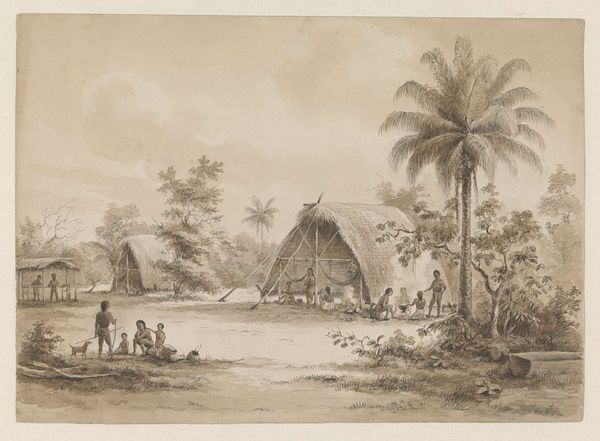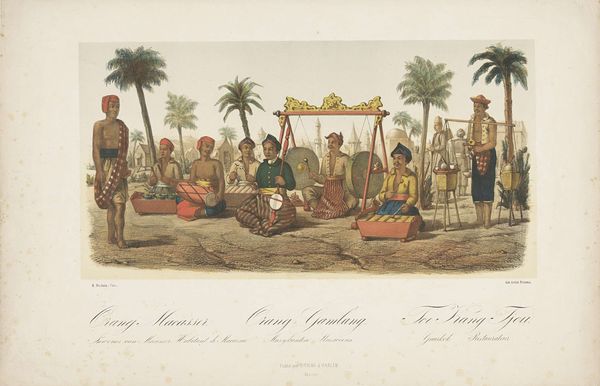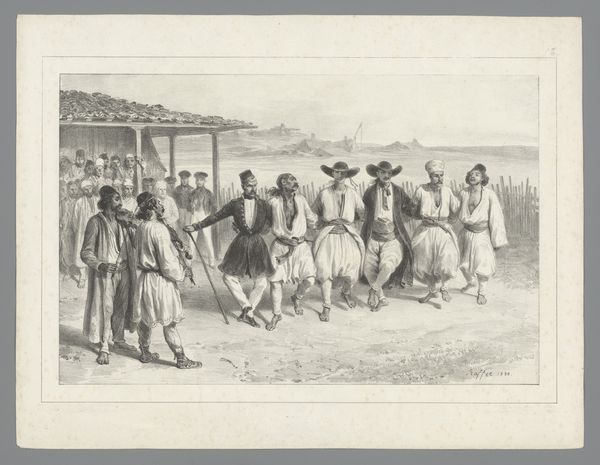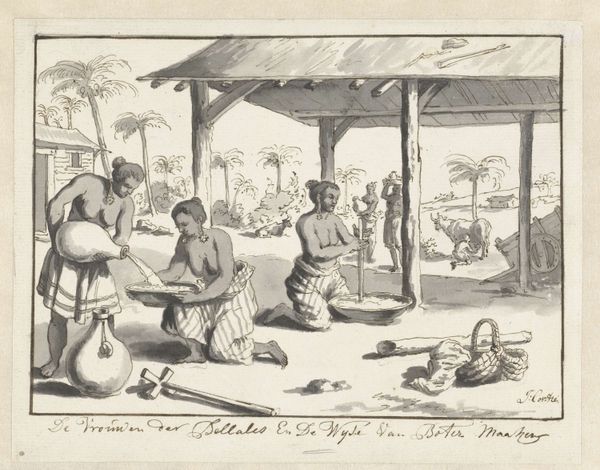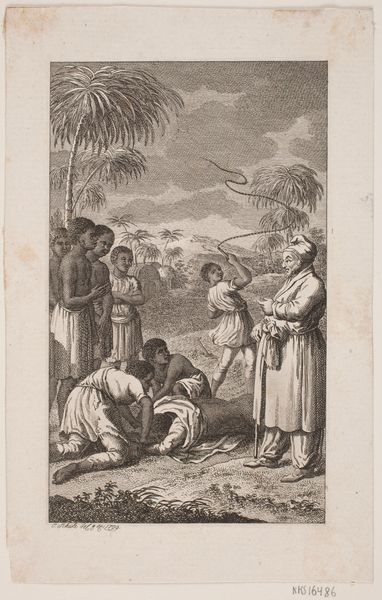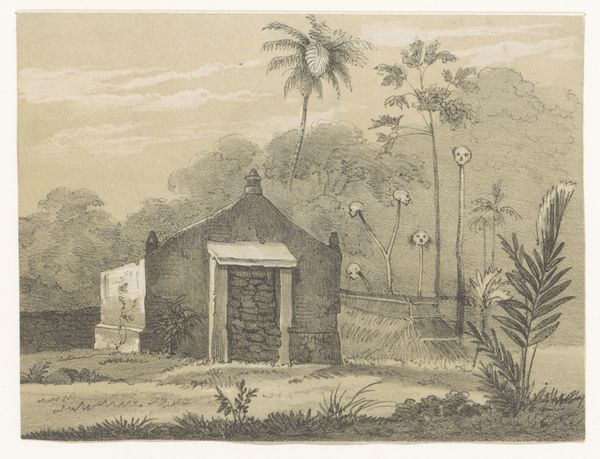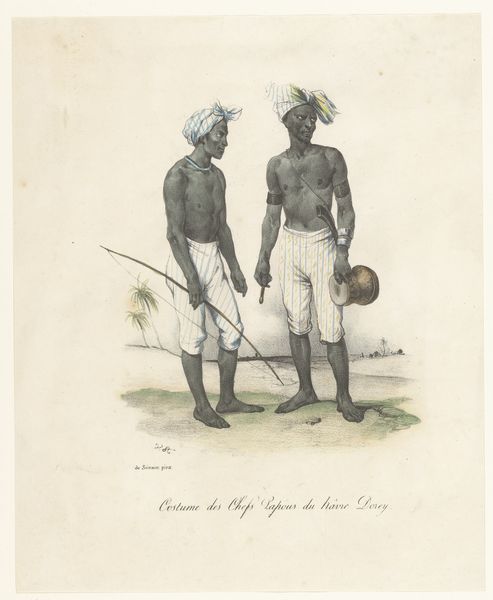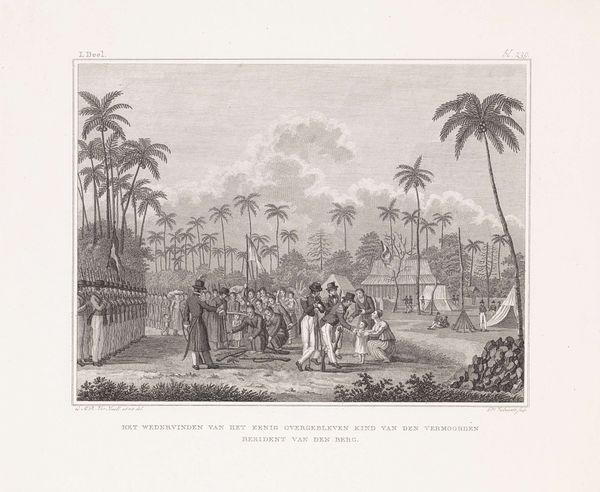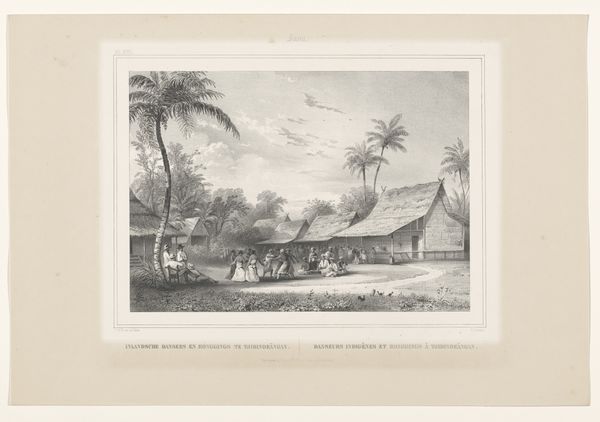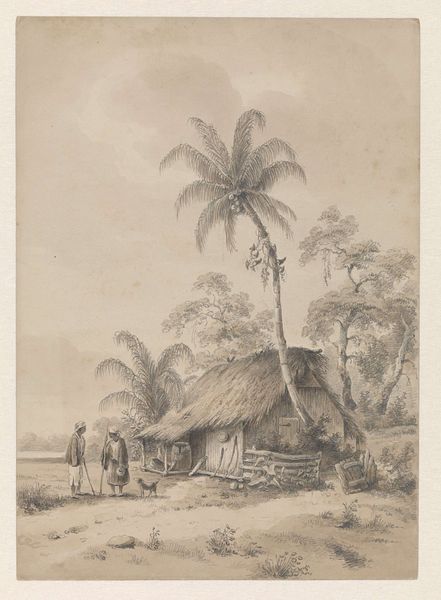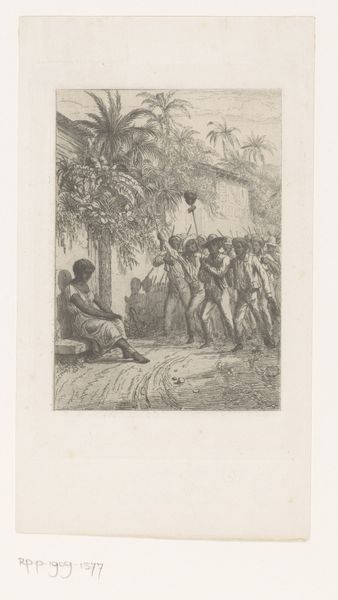
drawing, pencil
#
portrait
#
drawing
#
pen sketch
#
landscape
#
pencil
#
orientalism
#
realism
Dimensions: height 190 mm, width 323 mm
Copyright: Rijks Museum: Open Domain
Curator: I'm immediately struck by the stillness of this drawing. There's a palpable sense of watchful anticipation hanging in the air. It’s like a breath held before a storm. Editor: Indeed. What we’re looking at is a pencil and pen sketch titled "Atchineesche troepen" – meaning "Acehnese Troops" – attributed to C.D. Wulf, created sometime between 1873 and 1904. It provides a fascinating, though inevitably mediated, glimpse into the visual culture surrounding Dutch colonialism in Southeast Asia. Curator: Ah, "mediated" is the right word. Those carefully rendered palm trees and the sturdy, almost idyllic, little house...It softens the reality of armed men standing ready. Almost like taming the landscape, and its inhabitants, through art. Editor: Exactly. The drawing style, firmly rooted in realism, paradoxically serves an orientalist agenda. It purports to depict reality faithfully, but it does so through a very specific, colonial lens. These images, disseminated widely, played a significant role in shaping public perceptions back in the Netherlands, of both the land and the people. Curator: You can almost feel the pressure of representation. Were these men seen as noble savages, or dangerous rebels? I imagine that would shift with the political winds back home. Editor: Absolutely. And the composition, with the figures placed so deliberately in the foreground, with careful attention given to their weapons, directs the viewer's gaze and shapes the narrative. There is almost no motion except for where one man clutches the rather absurd cannon-like weapon, and that has to be intentional, don't you think? Curator: It's an unsettling beauty, isn’t it? So much implied in these simple lines and the subtle shading. A reminder of the power of art, even a seemingly unassuming drawing, to shape perspectives, construct identities and ultimately justify acts of colonialism. I wonder what these men thought, as they stood here, rendered now for a global audience? Editor: A stark reflection on how art becomes entangled with power, isn’t it? And the vital importance of questioning whose stories get told, and how.
Comments
No comments
Be the first to comment and join the conversation on the ultimate creative platform.
